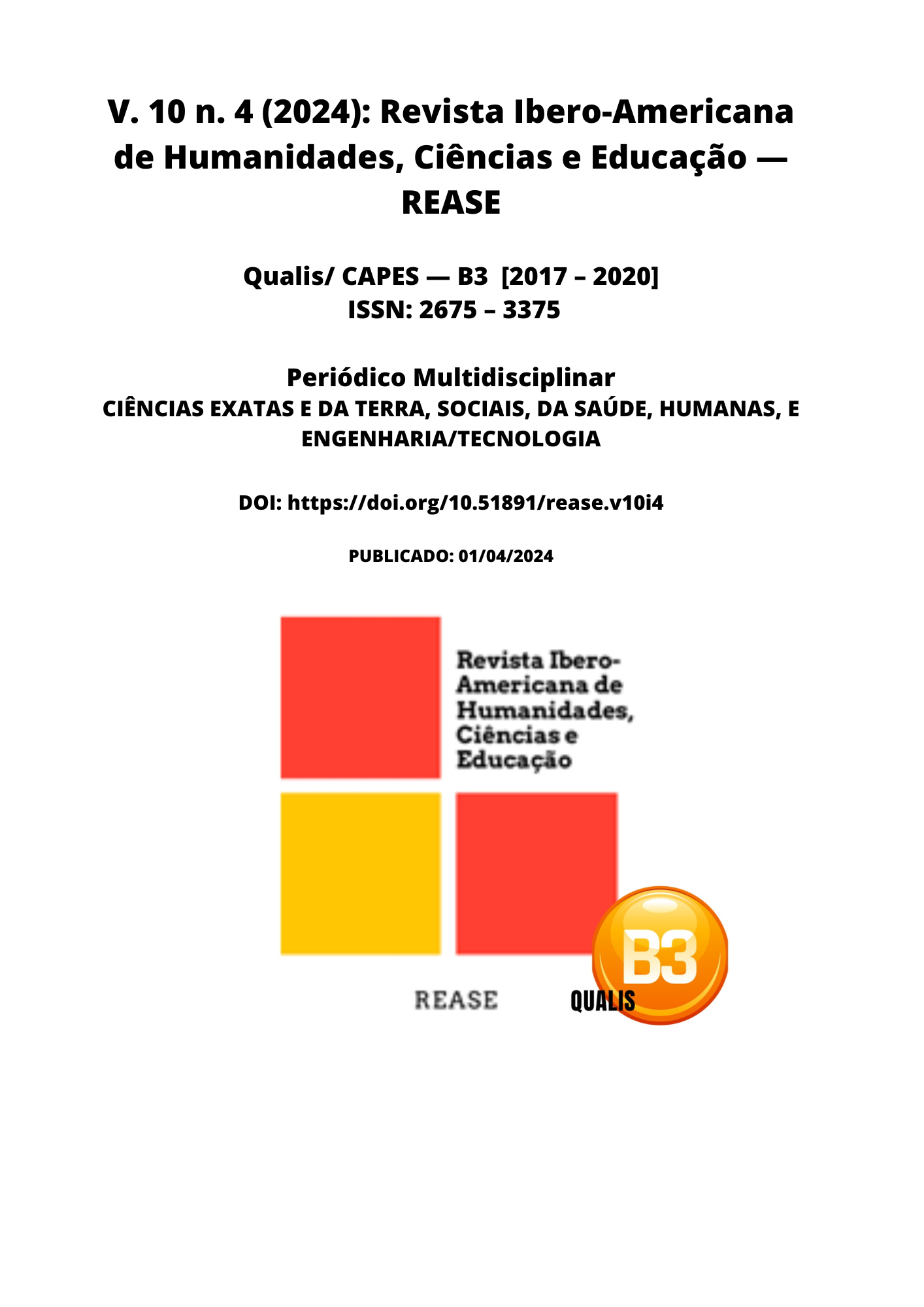THE IMPORTANCE OF DIET AND PHYSICAL ACTIVITY IN EARLY EARLY EDUCATION
DOI:
https://doi.org/10.51891/rease.v10i4.13631Keywords:
Food. Physical activity. Physics in Early Childhood Education.Abstract
Early childhood education plays a crucial role in children's cognitive and social development. However, several factors can negatively influence this learning process. One of these factors is malnutrition, which can compromise both the physical and intellectual development of children (BARBOSA; SOUZA; HERCULANO DE SOUSA, 2024). Furthermore, the lack of physical education classes can also have significant impacts, since the regular practice of physical activities contributes to the motor, social and cognitive development of children (MAGNUS ALMEIDA ALVES FILHO; CAMARGO OLIVEIRA, 2012). Given this context, it is essential to understand the relationship between learning in early childhood education and the presence of these elements, in order to promote an educational environment that is more conducive to the full development of children. The confusion between malnutrition and hunger is commonly found in the statements of educators, health professionals and public policies. Many claim that all poor children go hungry and/or suffer from malnutrition, as a justification for their learning problems at school. However, studies show that only 10% to 15% of children enrolled in public schools are victims of current or previous malnutrition, but generally in moderate or mild cases, not severe enough to leave irreversible consequences in the central nervous system. Hunger is the basic need for food that interferes with a person's mental and physical availability, however, when satisfied, it does not cause consequences. Malnutrition occurs when hunger is prolonged and intense enough to affect the body's energy supply. Children with severe malnutrition and neurological impairment are not in school, mainly due to the high infant mortality rate. Therefore, school meals do not reach children with severe malnutrition and have been insufficient to improve nutritional status. Although it can solve momentary hunger and the problem of an empty stomach, it is not enough to improve attention span and willingness to learn (SAWAYA, 2006). Practicing physical activity is a recommended public health strategy to improve the health of children and adolescents. Studies show that physically active adolescents have lower morbidity and health risks in adulthood, in addition to protection against cardiovascular risk factors since childhood. However, little research has been conducted to analyze the physical activity level of adolescents with malnutrition. A recent study revealed that these adolescents have lower levels of physical activity compared to their normal weight counterparts. However, as the study only analyzed general physical activity, little is known about other risk behaviors, such as a sedentary lifestyle, and the impact of malnutrition on specific types of physical activity, such as leisure-time physical activity (RÔMULO ARAÚJO FERNANDES et al ., 2014). Given the various factors that can compromise the learning process in early childhood education, such as malnutrition and lack of physical activity, it is essential to understand the relationship between these elements and learning. Malnutrition, although it affects a relatively small proportion of children enrolled in public schools, can have a significant impact on the physical and intellectual development of children. Meanwhile, the absence of physical education classes can compromise not only motor development, but also social and cognitive development. Therefore, it is necessary to promote an educational environment conducive to the full development of children, considering the importance of adequate nutrition and regular physical activity. Furthermore, it is important to clarify the difference between malnutrition and hunger in order to avoid mistakes in analyzing the problems faced by students. More research is also needed to better understand the physical activity level of adolescents with malnutrition and its impact on different aspects of health.
Downloads
Downloads
Published
How to Cite
Issue
Section
Categories
License
Atribuição CC BY

